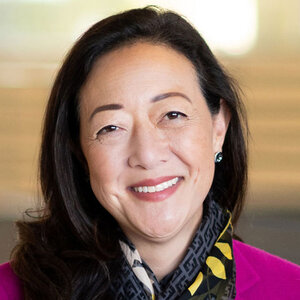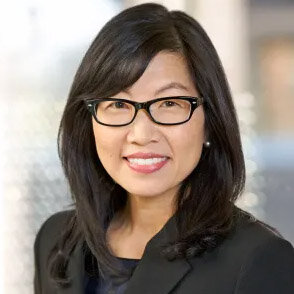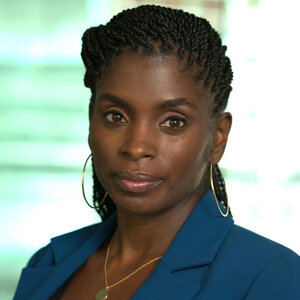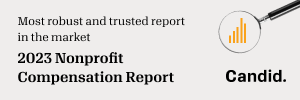Brandi Howard, President and CEO, East Bay Community Foundation: Centering community, sharing power
August 3, 2023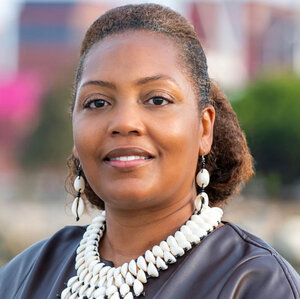
Brandi Howard has served as president and CEO of the East Bay Community Foundation (EBCF) since November 2022. Founded in 1928, EBCF is one of the oldest community foundations in the United States and works to advance racial justice through advocacy in addition to grantmaking.
Before joining EBCF, Howard was chief of staff and interim vice president of programs at San Francisco Foundation, where she was instrumental in advancing an equity-centered grantmaking policy focused on systems change. Prior to that, she worked for the New York City Department of Health and Mental Hygiene, where she oversaw initiatives to reduce infant mortality and chronic disease and strengthen Neighborhood Health Action Centers. She also worked as a doula and chaired the maternal child health subcommittee for the Alameda County Public Health Commission.
PND asked Howard about EBCF’s efforts to support movements and power building, philanthropy’s opportunity to discussions about racism and the nation’s history, Black Philanthropy Month, and how her experience working in maternal and public health informs her vision for an “inclusive, fair, and just East Bay.”
Philanthropy News Digest: In 2019, the East Bay Community Foundation updated its program areas to focus explicitly on racial justice, equity, and inclusion—Arts and Culture for Social and Racial Justice; Capacity Building with a Racial Equity Lens; Community Organizing, Power Building, and Movement Building; and Fostering Inclusive Economic Models—and stated that its new strategy was designed “to support movements.” Why is it important to fund “movements” and not just programs or initiatives, especially in the context of racial justice, equity, and inclusion? What are the challenges and opportunities?
Brandi Howard: We believe long-term change can’t be achieved without movements and power building. For East Bay Community Foundation, our focus is on supporting movements and building power towards a specific end—to change the economic conditions for those who call the East Bay home. Movement leaders are working hard to address multiple, interlocking issues that harm our communities. We need to be accountable to the type of change our communities want to see.
At East Bay Community Foundation, we are clear that our contribution to the broader change we all seek is to help build power to win on economic justice. As I move closer to my first year at the foundation, my colleagues and I are gearing up to work in close partnership with our grantees and community partners to better understand what is needed to change the economic conditions in our region. Emerging out of the COVID pandemic that has impacted Black communities and communities of color and worsened existing conditions, we are learning with our partners to understand what it will take, and how we will know conditions are shifting.
This is not a zero-sum game; it must be rooted in abundance. We must recognize that when those who historically have been left out get what they need, everyone in the region benefits.
As a community foundation, it is our time to engage partners across multiple sectors to realize the commitments made to racial justice and equity. And we can only do that by centering the communities most impacted by historical policies and practices that have created the conditions that we see today—the individuals, families, community-based organizations, and small businesses that serve as anchors to a thriving community. The ability to align our work with our partners and hold the complexity of what it will take to see that change is hard work. This is not a zero-sum game; it must be rooted in abundance. We must recognize that when those who historically have been left out get what they need, everyone in the region benefits.
PND: The Racial Equity in Philanthropy Group’s recent open letter, of which you are a signatory, states that, in the face of “a chilling effect when it comes to discussions about racism and the nation’s history” philanthropy has an opportunity to lead those conversations “in a productive way.” Could such conversation have an impact beyond the philanthropic sector? How might philanthropy help engage a broader segment of society those discussions ?
BH: Those of us who commit to equity work in philanthropy as funders are keenly aware of the contradictions inherent in this work. Philanthropy is rooted in capitalism, and it is essential that we have honest conversations about that, change the demographics of leaders in philanthropy, and use philanthropy as one of many tools that can drive deep change in our community, in our sector, and within systems.
As community foundations, we sit at the intersection of multiple sectors. I really take to heart what it means to center community and share power. Economic power is not something I inherited personally. By virtue of my role, I find myself stewarding economic power, and I am committed to leveraging that power on behalf of community. That means moving assets to increase the resources communities need to actualize change. It also means leveraging that power in spaces where community is not present. Yes, we have to relinquish power and give it to the people that it belongs to in the first place. And we also have to leverage the power of our role and assets on behalf of community-directed change.
Yes, we have to relinquish power and give it to the people that it belongs to in the first place. And we also have to leverage the power of our role and assets on behalf of community-directed change.
For example, if I am in a meeting with corporations, I can help push them beyond just providing products or services to commit to contributing to a thriving community as part of their social responsibility work. Our communities deserve effective governance, and as a community foundation CEO I cannot sit on the political sideline. So if I am meeting with elected officials, it is my responsibility to ensure that philanthropy is creating the necessary public and private partnerships to drive change.
PND: What does Black Philanthropy Month mean to you? How should this year’s theme, “Love in Action,” be acted on?
BH: I love Black Philanthropy Month. It is a moment of remembering that as a community, we have always been philanthropic. Black communities have been about “love in action”—our communities have faced and continue to face so many challenges, and yet, we have the proven capacity to live through the hard times and see the humanity of others in our community, even if we may not always show up as our best selves. We have the answers to the issues we face every day and we continue the legacy of giving of our time, our talent, and our treasure to be and see the change in the community
It is a reminder that we are here, we are and have been philanthropists, and we can create space to build on that legacy. I believe there are more Black people in traditional philanthropy now than in the past, and it is a time when we can shine a spotlight on representation in the sector and connect with each other.
PND: You previously served as chief of staff and interim vice president of programs at San Francisco Foundation, but prior to that, you worked for the New York City Department of Health and Mental Hygiene. How does your experience in the public sector inform your work at community foundations?
I worked with many families across racial and economic lines and have witnessed how much race and socioeconomic status contribute directly to infant and maternal morbidity and mortality.
BH: Early on in my work, I realized that the public sector has a lot of policies and restrictions on how it moves, what work it does, and how it spends. The bureaucracy can slow down the work. I think of philanthropy as a partner to the public sector, because it can be a catalyst for change that the public sector can follow. As a community foundation, we can work across multiple sectors; our work can encompass both (c)(3) and (c)(4) support, so we have flexibility in that sense. But philanthropy’s budget is dwarfed by that of the public sector. For those of us in philanthropy focused on systems change work, there is only so much we can do on our own. What we can do is innovate, and pilot, and spark change that public-sector leaders can follow and build on to make long-lasting, systemic change possible. My past experience also helped me understand that philanthropy can and should be a bridge between the public sector and communities on the ground, lift the veil behind that bureaucracy and make the work transparent, and also hopefully reduce that bureaucracy in the future.
PND: You also previously worked as a doula and childbirth coach for over 15 years. How does your work in the public health and maternal health fields inform your vision for an “inclusive, fair, and just East Bay” and how it can be achieved?
BH: One of the most critical things I learned through my work as a doula and a birth coach is to trust myself as a leader. If you ever experience childbirth directly or indirectly, you understand the depth of the tangible and intangible change inherent in that experience. Through this work, I’ve learned how to trust myself to see beyond what is there, to embrace the intangible.
The other concrete thing I learned is the relationship between systemic racism and the health and well-being of individuals, families, and communities. It helped me understand systems and systems change very concretely. I worked with many families across racial and economic lines and have witnessed how much race and socioeconomic status contribute directly to infant and maternal morbidity and mortality. That compelled me to leave doula work and focus on maternal health, so I could help shape programs that could truly help communities.
And lastly, it helped me understand that the change we are working to achieve, we may not see in our lifetimes. It may be several generations out. It is about legacy and about responsibility. Our service is the price we pay to be in this world.
Kyoko Uchida is managing editor at Philanthropy News Digest.


